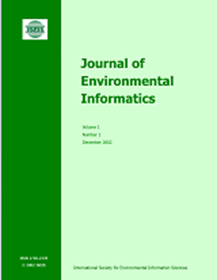2019冠状病毒病暴发期间伊朗大城市二氧化氮和夜间灯光数据集的时空变化
IF 5.4
1区 环境科学与生态学
Q1 ENVIRONMENTAL SCIENCES
引用次数: 0
摘要
COVID-19封锁导致交通量和工业活动减少,这是全世界空气污染的主要来源。由于对流层NO2污染物和夜间灯光(NTL)是人类活动的代表,本研究重点量化了伊朗14个大城市在3月、4月、10月和11月等封城月份之前、期间和之后的NO2浓度和NTL的年和月变化。利用Sentinel-5p卫星2019年、2020年和2021年的TROPOMI影像调查NO2柱密度,利用VIIRS影像监测NTL的变化。研究结果显示,2020年3月和10月,大多数大都市的二氧化氮浓度有所上升,4月和11月有所下降,但到2021年,二氧化氮浓度显著上升。大多数大城市NTL的变化模式与NO2相似。NO2浓度与NTL的相关系数为0.66 ~ 0.75。因此,在大多数大都市中,NO2的减少伴随着NTL的减少。结果表明,在固定源占主导地位的伊朗一些大都市(如伊斯法罕),减少交通流量作为移动源对NO2排放没有有效贡献。德黑兰作为伊朗首都,在封锁期间的年平均二氧化氮减少量最高,这一发现表明,与工业活动相比,交通量对德黑兰空气质量的影响至关重要。TROPOMI和NTL数据的综合应用将有助于更好地决策控制和管理该国城市地区的空气质量。本文章由计算机程序翻译,如有差异,请以英文原文为准。
Spatiotemporal Variation of Nitrogen Dioxide and Nighttime Light Dataset of Iranian Metropolises in the COVID-19 Outbreak
COVID-19 lockdown has caused a reduction in traffic volume and industrial activities which are the main sources of air pollution in whole of the world. As tropospheric NO2 pollutant and nighttime light (NTL) are the representative of human activities, this study focused to quantify the annual and monthly change of NO2 concentration and NTL in 14 metropolises of Iran before, during and after the lockdown months such as March, April, October and November. TROPOMI images of Sentinel-5p were used for investigation of NO2 column density in 2019, 2020 and 2021, and the variation of NTL was monitored by VIIRS images. The findings showed the majority of metropolises have an increase of NO2 concentration in March and October and a decrease in April and November in 2020 but a significant increase in 2021. The similar pattern of NTL change as NO2 was observed in the most metropolises. The correlation coefficient between NO2 concentration and NTL was calculated from 0.66 to 0.75. So, in majority of metropolises, the reduction of NO2 was observed with reduction of NTL. According to the results, reducing traffic volume as mobile source does not has an effective contribution in NO2 emission in some metropolises of Iran which the stationary sources are dominant such as Isfahan. Tehran as the capital of Iran showed the highest annual mean NO2 reduction in lockdown, this finding showed the important role of traffic volume on air quality of Tehran compared to industrial activities. The integrated application of TROPOMI and NTL data will help to better decision making for controlling and managing of air quality in country's urban area.
求助全文
通过发布文献求助,成功后即可免费获取论文全文。
去求助
来源期刊

Journal of Environmental Informatics
ENVIRONMENTAL SCIENCES-
CiteScore
12.40
自引率
2.90%
发文量
7
审稿时长
24 months
期刊介绍:
Journal of Environmental Informatics (JEI) is an international, peer-reviewed, and interdisciplinary publication designed to foster research innovation and discovery on basic science and information technology for addressing various environmental problems. The journal aims to motivate and enhance the integration of science and technology to help develop sustainable solutions that are consensus-oriented, risk-informed, scientifically-based and cost-effective. JEI serves researchers, educators and practitioners who are interested in theoretical and/or applied aspects of environmental science, regardless of disciplinary boundaries. The topics addressed by the journal include:
- Planning of energy, environmental and ecological management systems
- Simulation, optimization and Environmental decision support
- Environmental geomatics - GIS, RS and other spatial information technologies
- Informatics for environmental chemistry and biochemistry
- Environmental applications of functional materials
- Environmental phenomena at atomic, molecular and macromolecular scales
- Modeling of chemical, biological and environmental processes
- Modeling of biotechnological systems for enhanced pollution mitigation
- Computer graphics and visualization for environmental decision support
- Artificial intelligence and expert systems for environmental applications
- Environmental statistics and risk analysis
- Climate modeling, downscaling, impact assessment, and adaptation planning
- Other areas of environmental systems science and information technology.
 求助内容:
求助内容: 应助结果提醒方式:
应助结果提醒方式:


